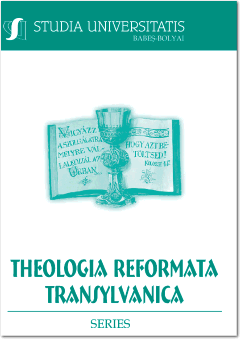A KATAKOMBAFESTMÉNYEK MINT „VIZUÁLIS PRÉDIKÁCIÓK” ÉRTELMEZÉSE
THE INTERPRETATION OF CATACOMB PAINTINGS AS „VISUAL SERMONS”
Author(s): Olga LukácsSubject(s): Christian Theology and Religion, Theology and Religion, Islam studies, Comparative Studies of Religion, Religion and science , Biblical studies, Sociology of Religion, History of Religion
Published by: Studia Universitatis Babes-Bolyai
Keywords: Catacomb Paintings; visual sermons; frescos; iconography; Christian symbol;
Summary/Abstract: Several viewpoints took shape about the pictures and icons during the history of Christianity. The image representations have been subject to debate not only among religions but among the various Christian approaches, too. This debate flamed up quite strongly in different times in history.The study aims to determine the extent to which the icons and representations are rooted in Christian tradition. The study points out that early Christian art did not appear and develop in a void. It was the outward manifestation of a new spirituality as well as the result of a development process that occurred when the local cultures of the ancient world got in contact with each other.It is essential to point out that in icon painting as well as in the paintings in the catacombs the message of the icons was also perfectly grasped by those who did not study painting or were not very skillful painters, but still observed the iconographic traditions while those who the painting were addressed to accepted them. One can assess Early Christian art by the very few frescos remaining in the catacombs in Rome.They used pagan symbols as well as some themes of Greek and Roman mythology in order to convey the teachings of the church. They also used the ancient forms of art, loading them with a new content subsequently altering the respective forms as well. The art of the catacombs was actually dogmatic art since the theme depicted on the frescos mostly followed the texts of the scripture. Furthermore, the symbolic language had a paramount importance. The works of art created in the first centuries can also be considered as “visual sermons” that helped them explain God verbally and drive them to God.
Journal: Studia Universitatis Babeș - Bolyai Theologia Reformata Transylvanica
- Issue Year: 64/2019
- Issue No: 1
- Page Range: 274-288
- Page Count: 15
- Language: Hungarian

